Introduction
In the last few years, Augmented Reality has created a plethora of ecosystems for almost every sector of daily life. From healthcare to education, from retail to entertainment, the application of AR has flourished like mushrooms, and the recent pandemic just catalyzed that spread. The pandemic-included lockdown has inadvertently increased the use of mobile phones, and as a consequence, it causes a sudden spike in using social media. Other than someone living under a digital rock, almost everyone has used the funky animated AR filters circulated in social media like Instagram, Snapchat, or even google Duo. Those sparkly spray fountaining out from the mouth while talking or the pirate goggles on the face not only add the fun element to the mundane reality but are extremely useful to create engaging content as well, and the big brands all over the world are taking advantage of this feature.
What are AR and AR filters?
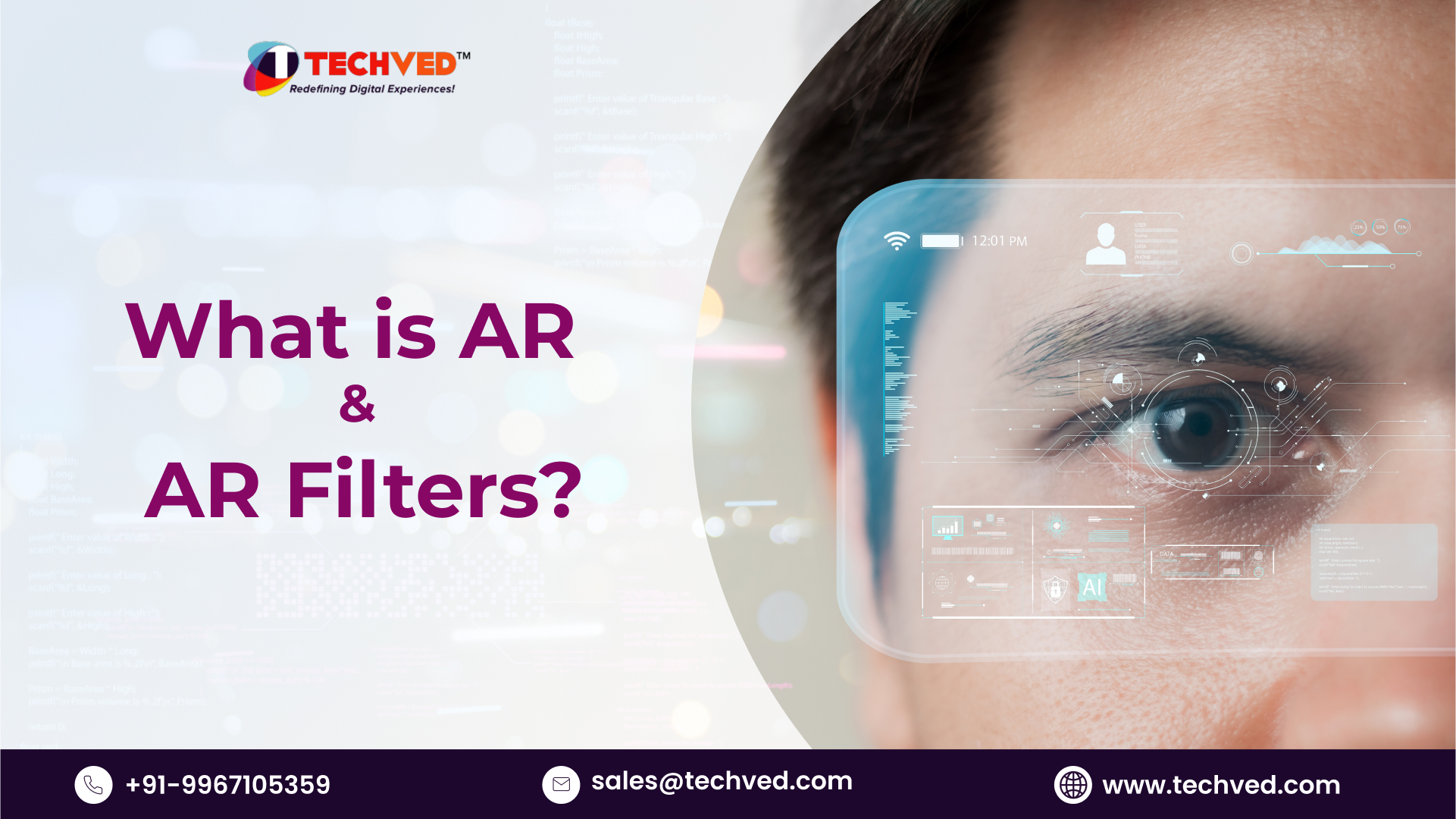
Augmented reality meaning, a world of possibilities that comes to life by blending real life with digital elements. It is a technology where computer-generated images enhance objects in the real world. These filters are superimposed graphics and virtual effects on the live video shooting by your mobile camera. They can create animal faces, give the user gadgets like sunglasses or makeup on their face virtually, and create a virtual world as desired. Users can record and post experiences on their social media stories as well.
Beginning of AR Filters
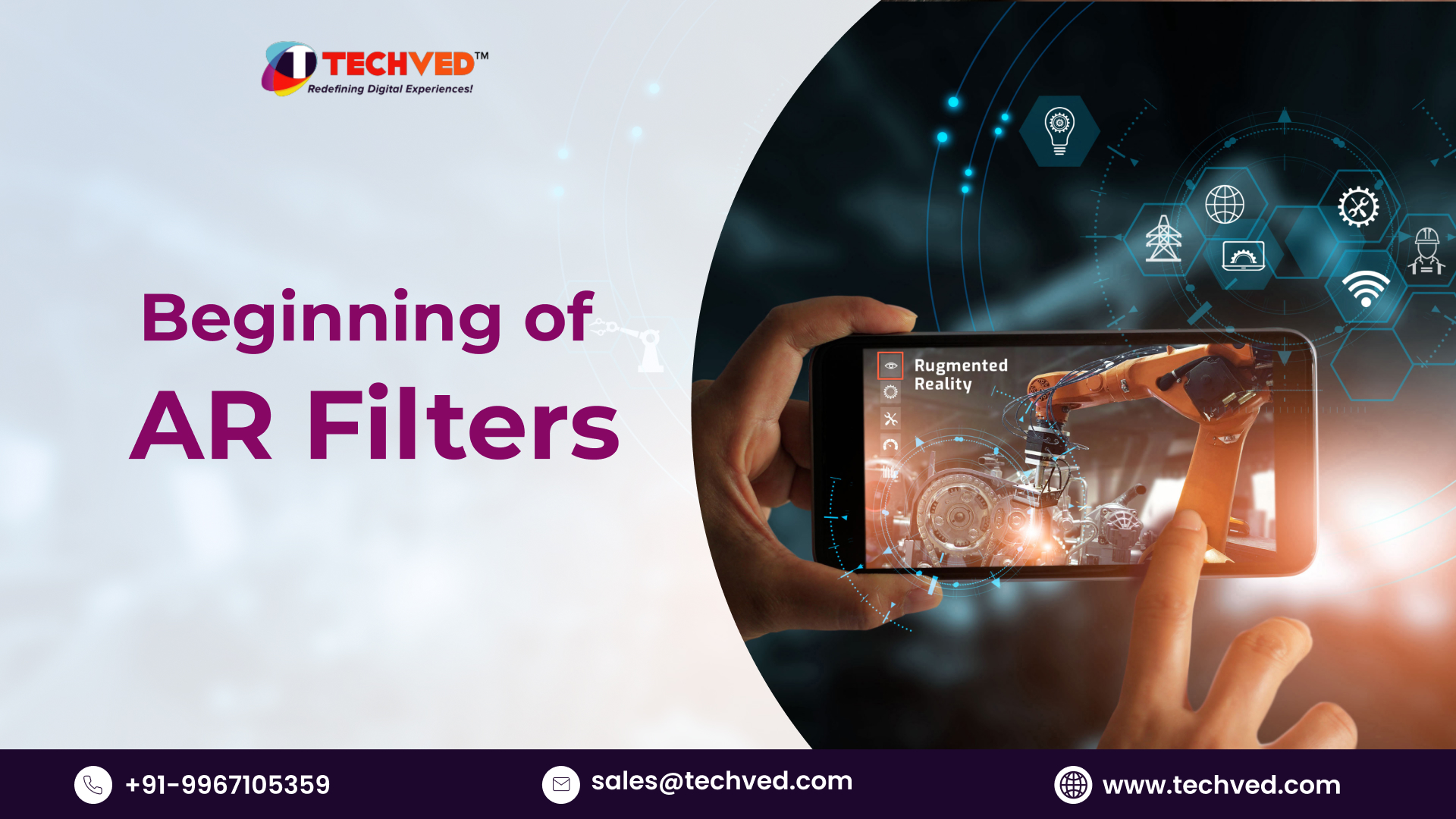
Augmented Reality filters have been introduced to Instagram since 2017, but the recent launch of Spark AR Studio, a platform by Facebook in August 2019, has boosted the use of AR filter app exponentially. The users can create customized branded AR Fiters through this studio and can share them on the stories of Fb messenger, Instagram, and Portal. According to Instagram, ⅓ of the most viewed Instagram stories are from brands, and brand stories have an 85% completion rate. So, this filter app might not be the right choice for every business right there, but as per the statistics, optimal utilization of this feature has significantly increased the value of brands around the world.
Benefits of Branded AR Filters
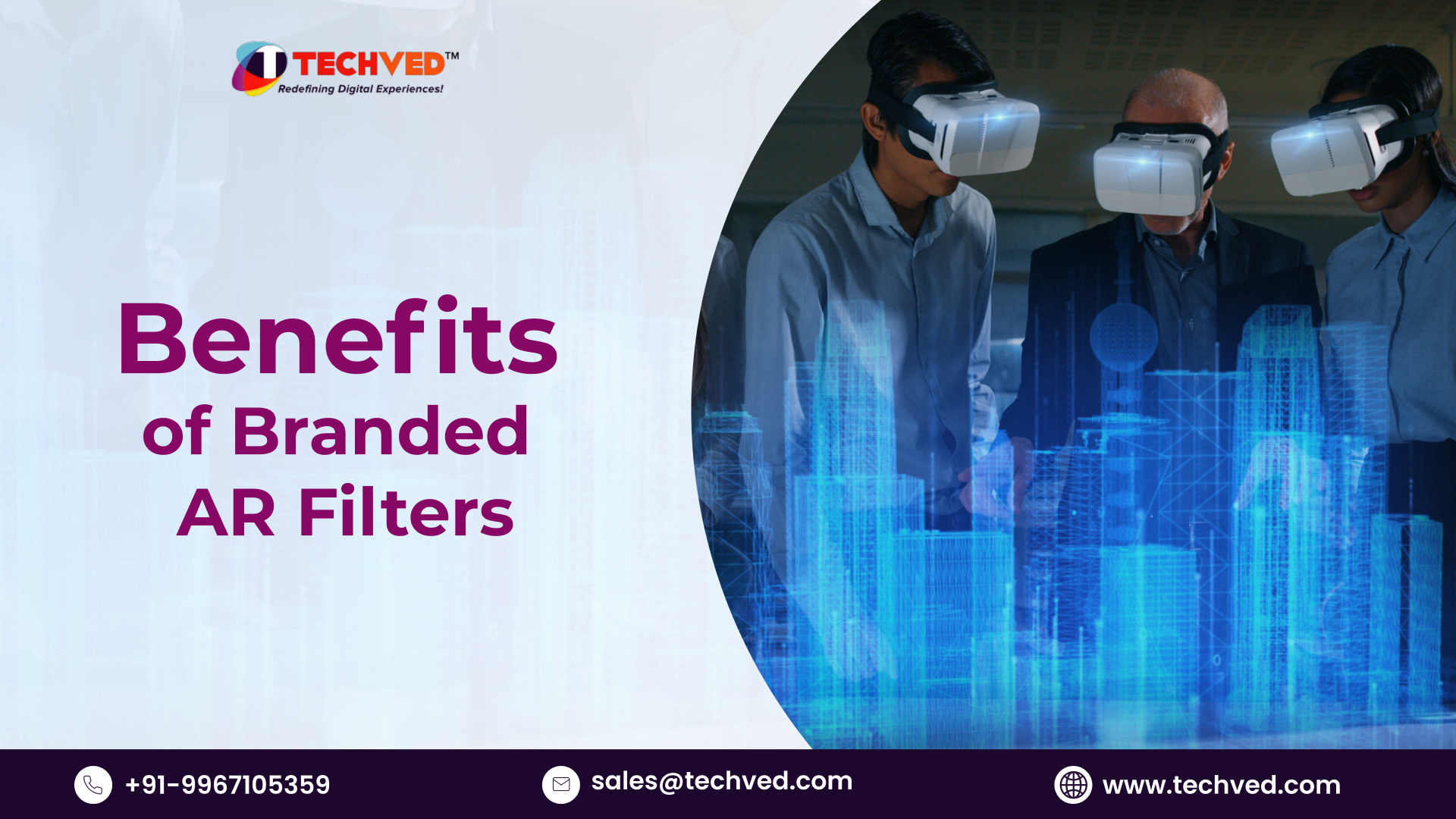
Virtual is the new normal now. This new normal has made people prefer digital platforms for shopping to meetings, from buying cars to grocery shopping over physical appearances. From consumer-facing brands to OTT channels, from movie production houses to social media, content creators are using snazzy Augmented reality filters to impact people’s lives more. It’s seen that to promote the content with such filters for brands has 70% better memory recall than any mundane promotional video.
Here are some key benefits of using Branded AR Filters ideas in marketing :
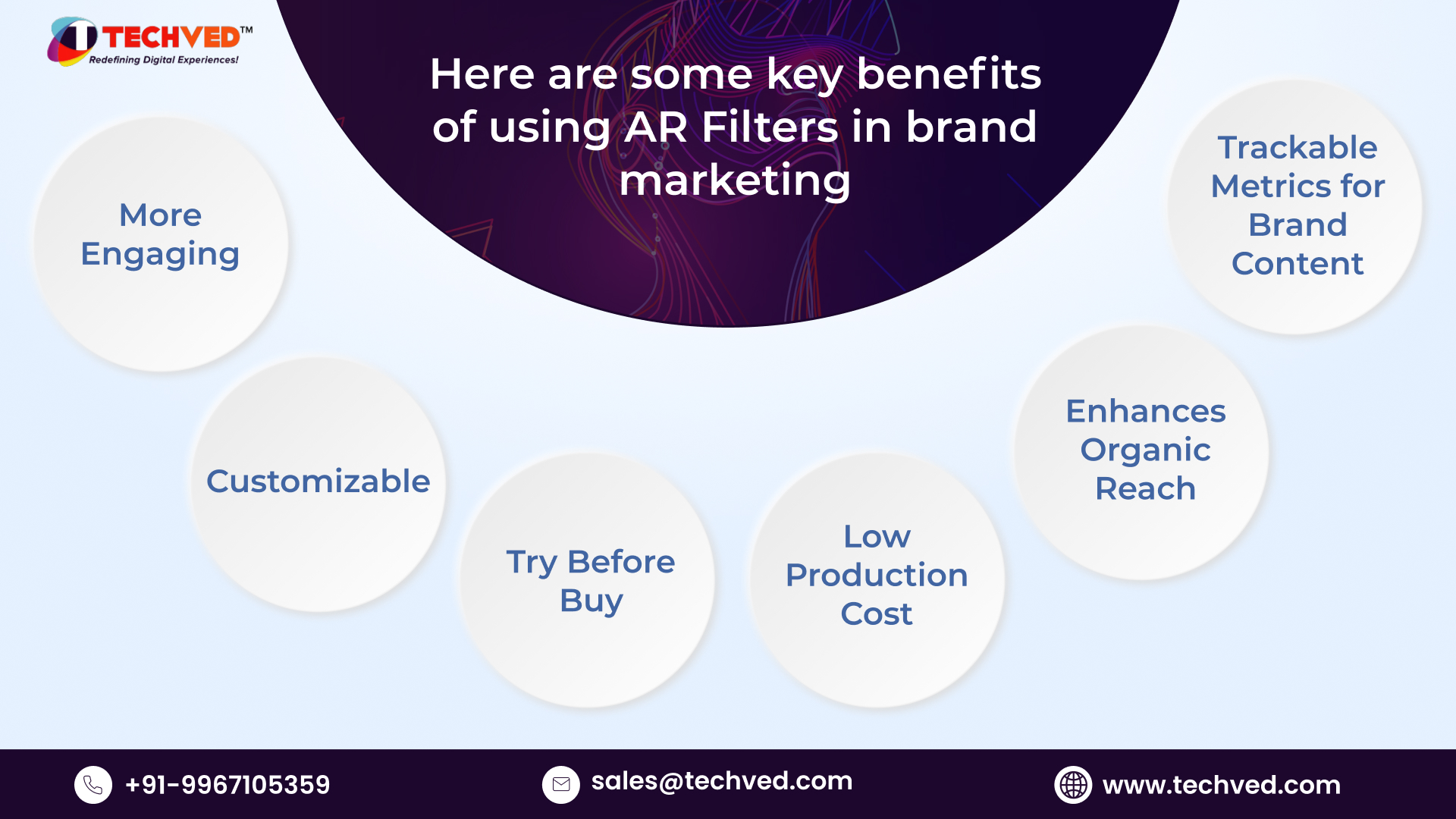
More Engaging
Over 1billion users worldwide make Instagram the biggest platform for branded AR filters, and the fun and immersive nature of the filters makes content more engaging. Using these filters like polling stickers increased the viewing ratio by 3 secs on average in 90% of its campaign. So, instead of a 15sec video that users can skip easily, Instagrammers can use Brand Filters on Instagram to make their content more engaging and fun.
Customizable
Filters can be created as per brand’s needs in customized manner. And now that people are taking AR Filter development as a career, any professional in this field can create customized filters like creating specific brand colors, mascots, or campaign taglines for the brand according to the marketing strategy.
Try before Buy
Major retail brands implementing filters in their marketing campaign make the buyer’s experience much more accessible from home. For example, Ray-Ban launched a Reindeerzed filter to provide customers a playful interaction with the brand and try on a pair of sunglasses virtually before buying. Instagram Branded AR Filters also provide users to try filters and make them understand the brand.
Less Production Cost
Creating Augmented Reality filters app are budget savvy and do not need to drill a big hole in the marketing budget. It’s an inexpensive alternative to other media as one doesn’t need to pay for any specific media here. They can be made for as little as $1300.
Enhances Organic Reach
Social media platforms, especially Instagram, are majorly driven by user-generated content, and brands carefully use that as their marketing strategy. When a user who’s a follower of a particular brand comes across the brand’s latest Augmented Reality filter and shares that experience by sharing the video on their own story. The other users who’re not following the brand directly but are the followers of that user get intrigued by the story and reshare it or start to follow the brand. Similarly, the brand itself shares the user story using their filter on their page to enhance the marketing.
Trackable Metrics for Brand Content
Brands can see the metrics from sponsored stories or influencer marketing. Moreover, Facebook also provides the following metrics, monitored via Facebook’s Spark AR Hub. It is an online platform where anyone with a Facebook account can log in and upload filters on either Instagram or Facebook.
Brands Using AR Filters in Instagram:
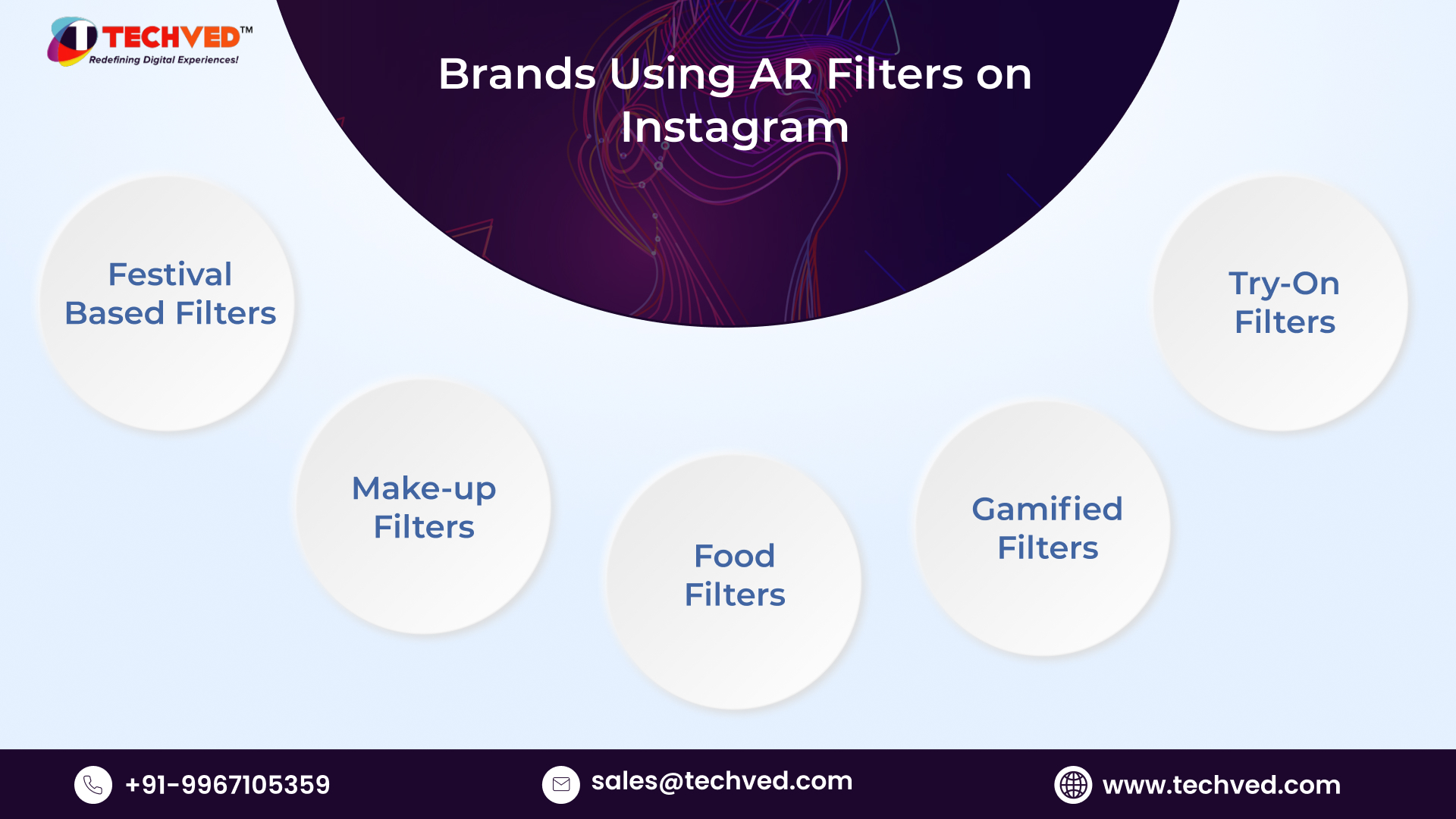
Brands use AR filters in various sectors to drive brand awareness. Some of the examples are as follows:
Festival-Based Filters
Coca-Cola Poland has created a brand mascot-a polar bear as a filter that would dance on the living room floor wearing a company imprinted scarf, a symbol of Christmas. This proved to be an excellent festive time offering.
Makeup Filters
Mac cosmetics launched their makeup filter to try different kinds of eyelashes and their shades.
Food Filters
Taco Bell, one of the first brands to experiment, created a giant Taco filter that would replace the user’s head in the video while using it. More than 100 million users used this filter.
Gamified Filters
India’s mango-flavored drink Frooti has created a game filter. A user can catch falling mango with their opened mouth after enabling the phone camera in this game. AR Filter Games are the most popular and trending today. Like Augmented reality glasses are also one of the thing that create more engagement.
Try-On Filters
Adidas is associated with Snapchat to allow users to try on the products virtually before buying.
Key considerations for Using AR Filters
1. Though Augmented reality projects are gradually sweeping the other marketing campaign due to their easy access and vast reachability, still it’s essential to evaluate some considerations before jumping into using the filters.
2. Before using or creating any filter, a well-planned marketing strategy is crucial to plan out its execution.
3. It should be engaging to boost the sharing capacity.
4. Thorough research about the target audience should be considered in the strategy.
5. The right tool and platform should be chosen to launch the filter.
Reality Check
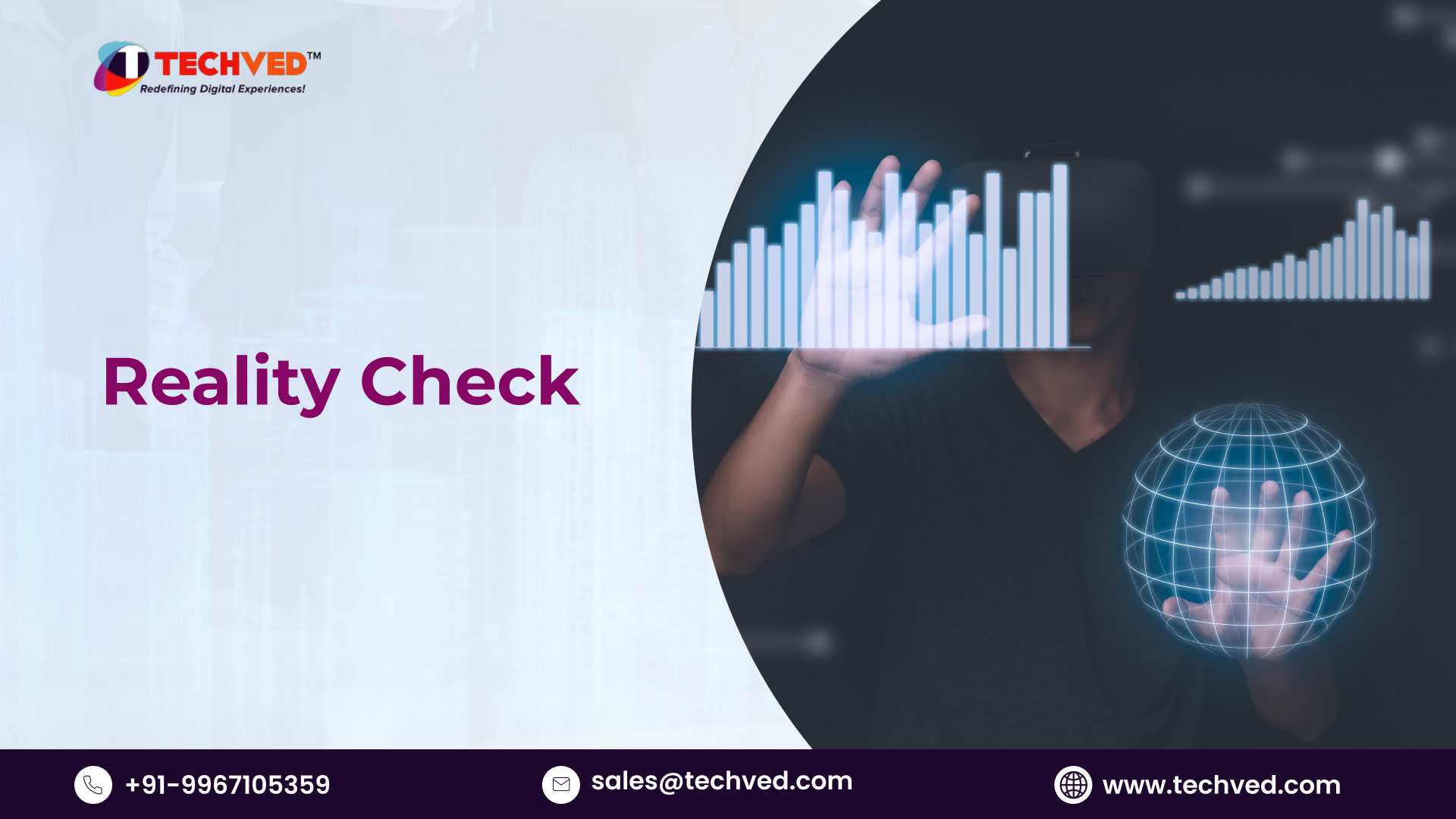
Like with every technical advancement, AR also brings some drawbacks to the plate. According to some digital agencies, Deefake will shortly take the AR filters’ space. To prevent this to some extent, platforms like Snapchat and Facebook have enforced guidelines. As per the guideline, apart from the creators, the real faces of other people are not allowed. As a matter of fact, in 2020, FB has banned creators from creating any face deforming features for a brief period.
Conclusion
In the end, it can be said the Augmented Reality filter is a new frontier in brand marketing. According to research, AD revenue in AR will grow from $68million to $13 billion in 2022. As people are bending towards engaging and immersive content, brands have several platforms to create their filters and provide a unique experience. Its meaning bringing more engagement, fun & ideas for brands to market themselves in the near future.
FAQS
1. What is augmented reality in simple terms?
AR is based on a real-world view of the environment with virtual visuals projected into it (generally through the camera of a mobile phone). The real world remains fundamental to the experience, which is enhanced by virtual aspects that interact. The fundamental advantage of AR is that it blends digital and three-dimensional (3D) components with a person's view of the real environment. AR has a wide range of applications, from decision-making to entertainment.
2. What is the difference between VR and AR?
Both augmented reality and virtual reality (VR) use technology to immerse individuals and enhance their vision, but they do it in very different ways. While virtual reality fully replaces what individuals see and experience, augmented reality enhancements it. You are completely immersed in a virtual environment in VR whereas AR allows you to interact with the real environment while adding personalized content.
3. What augmented reality do?
With augmented reality, there are unlimited ways to interact and enhance the real environment. The fundamental benefit of AR experiences is that the content is interactive and customized, as each person may freely engage with the content on their screen. AR provides the user with visual elements, sound, and other sensory information via a device such as a smartphone or glasses. This data is superimposed on the device to create an integrated experience in which digital data influences the user's vision of the actual environment.
4. How AR is used in day to day life?
Today, augmented reality is applied in a variety of ways. Filters on Snapchat, Instagram, and iPhone Facetime are just a few examples of how people use AR on a daily basis. Facial recognition software included in camera hardware has become increasingly advanced. This technology is used in gaming too and luxury automotive makers show AR-enabled info on their windshields and dashboards. AR is becoming a part of everyone's day-to-day life as the globe changes and technology evolves.